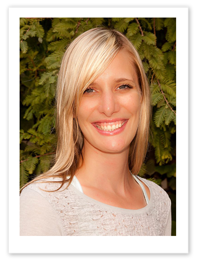Opening Remarks
October 11, 2016
A Letter from Amy Greil, Chair of the City of Kenosha Commission on the Arts.
 Good evening everyone and thank you so much for taking time away from your lives to be here tonight. My name is Amy Greil, I’ve been the one sending you e-mails and I have been working with many, many people to make this night possible. I’m serving as the Chair of the City of Kenosha Commission on the Arts, and it is the Commission on the Arts that is the host and sponsor of this Kenosha Creative Economy Strategic Plan. On behalf of the Commission, I will say thank you for your willingness to engage in this process.
Good evening everyone and thank you so much for taking time away from your lives to be here tonight. My name is Amy Greil, I’ve been the one sending you e-mails and I have been working with many, many people to make this night possible. I’m serving as the Chair of the City of Kenosha Commission on the Arts, and it is the Commission on the Arts that is the host and sponsor of this Kenosha Creative Economy Strategic Plan. On behalf of the Commission, I will say thank you for your willingness to engage in this process.
I would also like to take a moment to thank a few individuals and organizations for making tonight a reality. The City of Kenosha Mayor, John Antaramian, has been a strong advocate for this process and secured funding to make it possible. Robert Schneider from the Kenosha Community Foundation has also stepped forward in a major way to make a financial contribution and act as our fiscal sponsor for the project. Francisco Loyola has been working closely with me—and the Commission, from behind the scenes to line this process up starting back in November of last year. We wouldn’t be here if it wasn’t for his support. I’d also like to recognize my own organization of Kenosha County UW-Extension that has allowed me to devote so much time to the Commission and is our sponsor for the venue/food tonight.
With all that out of the way–I am here to set the stage and context for this planning process. I am very humbled to be up here to kick-it off. I also know I have the great responsibility to impress upon us all the enormity of the task at hand.
We live in a complex environment; our region and local community continue to grapple with the demands of a post-industrial era. Our community has the physical scars (Chrysler site) and emotional scars (disillusionment and distrust) that reveal recent—and drastic disruptions in the local economy. When we lift our eyes from our local scene, we know our community is not alone in this shift. We see many, many communities are finding shared solutions to similar dilemmas, many have not fared as well as Kenosha, that’s for sure. But the lesson I take away from all of this is that land, labor and capital are no longer the keys to economic development. Land, labor and capital have shifted to mere tools and inputs. Now, instead, innovation and adaptability and creativity are emerging as the driving forces to business and our larger economy.
It is this belief that creativity is the engine of this new economy. Creativity is driving the market and it will continue to do so for the foreseeable future. That is why the City of Kenosha Commission on the Arts has endeavored, since 2011, to bring people together to set a course for the future.
We are here to set off on a journey of discovery, sharing, learning and ultimately alignment. We are going to set a tangible roadmap so the Kenosha area can define its one future—proactively. Gone are the days where we can just sit back in our respective circles and watch or let things come to us. We control our own destiny and will establish priorities, together, that will best position our community to compete in the creative economy that I argue—is dramatically shifting the way everyone does business.
I encourage you to step back from your particular field and see everyone in this room as critical links to our local creative economy. Creativity is not limited to arts, artists and cultural institutions—therefore this process will not be limited to discussions of arts and culture. While these are, in my mind, the highest and greatest expressions of creativity that touch and transform hearts and minds—these realms do not express the full extent of creativity. Everyone is creative and everyone must see themselves as such. We need to draw the greatest number of individuals within this planning process—not just those working in the arts, not just those who are here tonight, nor just those who identify as being “creative.”
This journey is guided. We have guides and companions in our five Bolz Center students, faculty member Sherry, and our arts consultant Christine. They are valued as outside observers, experienced researchers and possess expertise in helping communities like ours attain a vision for the future. We also have selected to co-chairs for the steering committee that will act as liaisons and public faces because of their affiliations—but you are all empowered to own this opportunity and make it your own. We will come together as a united team that trusts each other over the coming months.
Amy Greil
